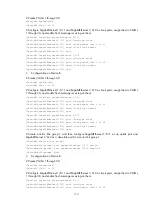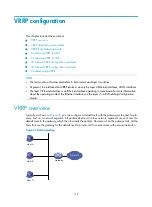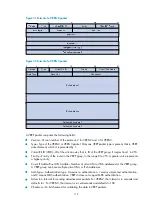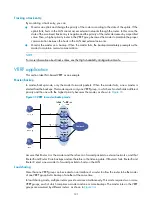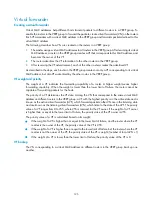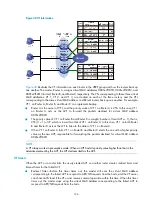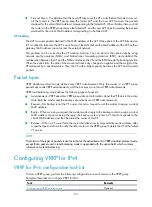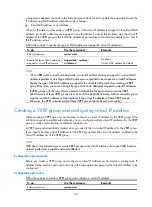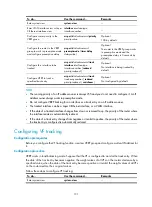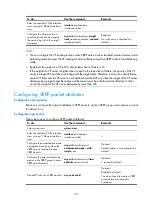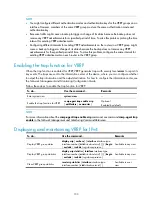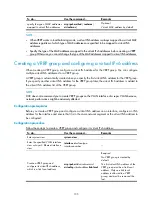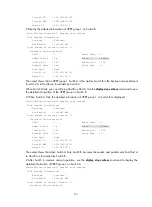
127
•
Timeout Timer—The duration that the new AVF takes over the VF owner. Before this timer times out,
all the routers in the VRRP group keep the failed AVF, and the new AVF forwards the packets
destined for the virtual MAC address corresponding to the failed AVF. When this timer times out, all
the routers in the VRRP group remove the failed AVF, and the new AVF stops forwarding the packets
destined for the virtual MAC address corresponding to the failed AVF.
VF tracking
The AVF forwards packets destined to the MAC address of the AVF. If the uplink of the AVF fails and no
LVF is notified to take over the AVF's work, hosts on the LAN that use the MAC address of the AVF as their
gateway MAC address cannot access the external network.
This problem can be solved by the VF tracking function. You can monitor the uplink state by using
network quality analyzer (NQA) and bidirectional forwarding detection (BFD), and establish the
collaboration between the VF and the NQA or between the VF and the BFD through the tracking function.
When the uplink fails, the state of the monitored track entry changes to negative and the weight of the
VF decreases by a specified value. Then, the VF with a higher priority becomes the AVF and forwards
packets.
Packet types
VRRP standard protocol mode defines only VRRP advertisement. Only the master in a VRRP group
periodically sends VRRP advertisements, and the backups do not send VRRP advertisements.
VRRP load balancing mode defines the following types of packets:
•
Advertisement—VRRP advertises VRRP group state and information about the VF that is in the active
state. Both the master and the backups periodically send VRRP advertisements.
•
Request—If a backup is not the VF owner, it sends a request to ask the master to assign a virtual
MAC address.
•
Reply—When receiving a request, the master sends a reply to the backup router to assign a virtual
MAC address. Upon receiving the reply, the backup router creates a VF that corresponds to the
virtual MAC address, and then becomes the owner of this VF.
•
Release—When a VF owner fails, the router that takes over its responsibility sends a release after
a specified period of time to notify the other routers in the VRRP group to delete the VF of the failed
VF owner.
NOTE:
The format of the types of packets is similar to that of the advertisement in VRRP standard protocol mode
except that a packet used in load balancing mode is appended with the option field, which contains
information for load balancing.
Configuring VRRP for IPv4
VRRP for IPv4 configuration task list
To form a VRRP group, perform the following configurations on each device in the VRRP group.
Complete these tasks to configure VRRP for IPv4:
Task Remarks
Configuring a VRRP working mode
Optional

